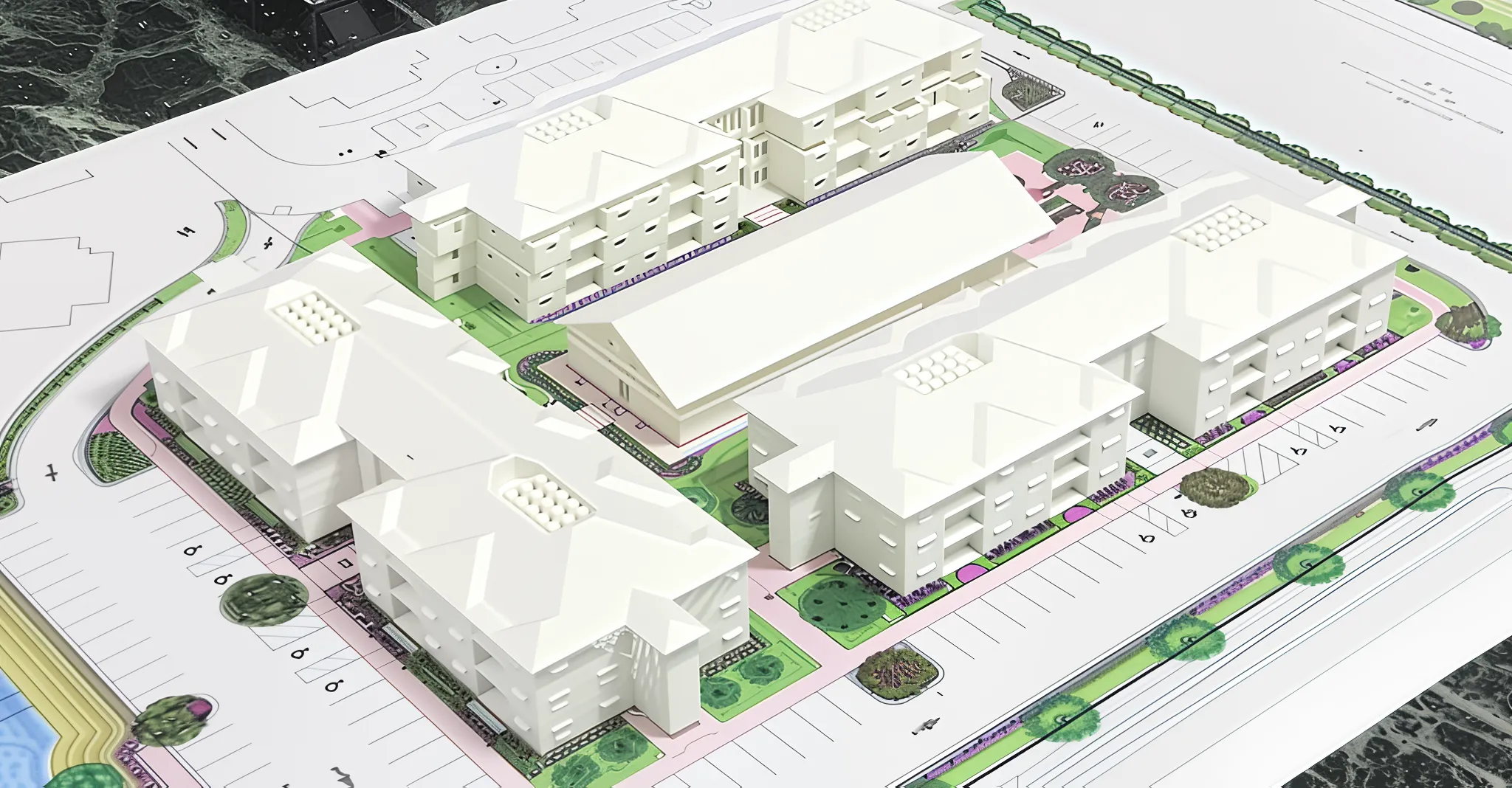Beyond Blueprints: The Craftsmanship Behind Durable Structures

Approaches to Durable Construction
-
Traditional Craftsmanship
Focuses on time-honored methods using natural stone, timber, and brick. Emphasizes skilled artisans, meticulous joint work, and deep understanding of material properties. This approach ensures inherent structural integrity and lasting aesthetic appeal through proven techniques.
-
Engineered Material Integration
Leverages advanced composites, high-performance concrete, and specialized steel alloys. This method prioritizes precise structural calculations, material science innovations, and optimized designs to achieve superior strength-to-weight ratios and extended service life.
-
Modular Pre-construction
Involves fabricating structural components or entire modules in controlled factory environments. This approach ensures consistent quality, reduces on-site variables, and accelerates assembly. It enhances durability through rigorous manufacturing standards and precise component fit.
Key Evaluation Criteria
-
Long-Term Durability
How well does the method resist environmental stressors, wear, and aging over decades? Assesses material resilience and structural integrity against decay.
-
Adaptability & Maintenance
Ease of modification, repair, and upkeep throughout the structure's lifecycle. Considers accessibility for inspections and cost-effectiveness of repairs.
-
Construction Efficiency
Speed of execution, resource utilization, and complexity of on-site operations. Evaluates the overall timeline and labor requirements from start to finish.
-
Structural Resilience
Ability to withstand extreme loads, seismic activity, or severe weather events without catastrophic failure. Focuses on inherent strength and load distribution.
Traditional craftsmanship excels in long-term durability due to the inherent properties of natural materials like stone and heavy timber. Structures built with these methods often stand for centuries, demonstrating remarkable resilience against weathering and time. The focus on robust foundations and interlocking elements contributes significantly to their ability to withstand environmental stresses and moderate loads. Stonecraftjit values this enduring quality.
While offering exceptional longevity, traditional methods can present challenges in adaptability. Modifications often require specialized skills and are labor-intensive. Construction efficiency is generally lower compared to modern techniques, demanding more time and highly skilled labor on-site. However, routine maintenance is often straightforward, focusing on material preservation rather than complex system overhauls.
Engineered material integration provides superior structural resilience. High-performance concrete and advanced steel offer exceptional strength, making structures highly resistant to seismic forces and extreme weather. Their long-term durability is achieved through precise material formulation and controlled curing, minimizing degradation and extending the service life significantly beyond conventional approaches.
This approach enhances construction efficiency through optimized designs and faster assembly processes, often involving pre-stressed components. However, adaptability can be complex; modifications to highly integrated, engineered structures might require extensive analysis and specialized interventions, making post-construction changes more challenging and costly. Regular inspections are crucial for maintenance.
Modular pre-construction significantly boosts construction efficiency. Components are built off-site under strict quality control, leading to rapid on-site assembly and reduced weather delays. This controlled environment also contributes to consistent long-term durability, as material quality and joint integrity are meticulously managed, minimizing defects that could compromise structural integrity over time.
While highly efficient, adaptability in modular structures can be limited by their standardized design. Extensive modifications might require disassembling and replacing entire modules. However, the inherent precision of factory-built components often results in excellent structural resilience, as critical load-bearing elements are manufactured to exact specifications, ensuring robust performance under various conditions.
Recommendations for Method Selection
For projects where historical authenticity, unique aesthetics, or integration with natural landscapes are paramount, traditional craftsmanship is often the preferred choice. It's ideal for structures intended to endure for generations, offering timeless appeal and robust performance, especially where construction timelines are flexible and skilled artisans are available.
When facing stringent structural demands, such as in high-seismic zones or for very tall buildings, engineered material integration offers superior performance. This method is best for projects requiring maximum resilience, optimized material usage, and a long service life with minimal structural degradation, provided design changes are anticipated early in the planning phase. Stonecraftjit applies these principles rigorously.
Modular pre-construction is highly advantageous for projects prioritizing speed, cost-effectiveness, and consistent quality across multiple identical or similar units. It's suitable for remote locations or sites with limited on-site labor. This approach ensures reliable durability through factory-controlled processes, making it excellent for rapid deployment and standardized structural needs.
Often, a hybrid approach proves most effective, blending the strengths of different methods. For instance, engineered materials might form the core structure for resilience, complemented by traditional craftsmanship for aesthetic finishes. Stonecraftjit guides clients to solutions that perfectly balance durability, efficiency, and design aspirations for optimal long-term value.

Anand Sharma
This article provides a clear overview of different construction methods. It's helpful for understanding the basics, though more detailed case studies might illustrate the points better.
Geetika Khatri
Thank you for your feedback! We aim to provide concise overviews for initial understanding. Specific case studies could indeed be a valuable addition for future content.
Amrita Naik
I appreciate the breakdown of criteria. It really helps in seeing how each approach measures up. The recommendations are practical and well-articulated.
Rohin Vohra
We're glad you found the criteria and recommendations useful! Our goal is to empower informed decision-making for lasting structural integrity.
Rajesh Iyer
The comparison section is quite thorough. I found the points on adaptability particularly insightful, as it's often overlooked in initial planning.
Shalika Bahadur
That's an excellent observation. Adaptability is indeed a critical factor for a structure's long-term utility, and we strive to highlight its importance in our guidance.